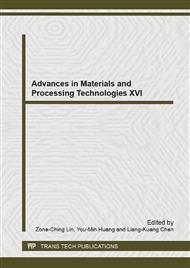p.214
p.222
p.230
p.239
p.245
p.253
p.260
p.266
p.274
An Analytical Model for Deformation Path Design in Multistage Incremental Sheet Forming Process
Abstract:
Incremental sheet forming (ISF) is a new promising technology due to its flexibility and low-cost tooling properties compared with conventional forming processes. However, a common technical problem encountered in ISF is non-uniform thickness variation of formed parts, particularly excessive thinning on severely sloped regions, which may lead to the part fracture and limit the process formability. Design of multistage deformation paths (intermediate shapes or preforms) before the final part is a desirable and practical way to control the material flow in order to obtain more uniform thickness distribution and avoid forming failure. Based on the shear deformation and the strain compensation idea, an analytical model for designing multistage deformation paths and predicting the thickness strain distribution is proposed. The feasibility of the proposed model is validated by the finite element analysis (FEA) and experimental tests in terms of the comparison of prediction, simulation and experimental results on the thickness strain distribution and the process formability.
Info:
Periodical:
Pages:
245-252
Citation:
Online since:
May 2014
Authors:
Price:
Сopyright:
© 2014 Trans Tech Publications Ltd. All Rights Reserved
Share:
Citation:


